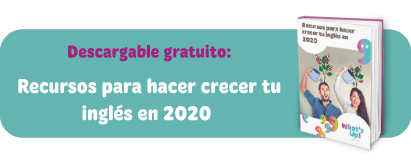What's Up! blog
el mejor contenido del mejor curso de inglés
A lot of: aprende a utilizarlo sin errores
Uno de los errores que comentemos los españoles en inglés consiste en confundir los cuantificadores much, many y a lot of, lo que es hasta cierto punto comprensible porque los tres significan mucho/s. En este post repasamos los quantifiers en inglés, centrándonos en a lot of, quizás el más “diferente” para nosotros.
La teoría nos dice que se usan así:
- Much + uncountable nouns
- Many + countable nouns
- A lot of + countable or uncountable nouns
Parece fácil, pero el problema viene cuando no sabemos si el sustantivo es contable o incontable, algo que no siempre se corresponde con nuestro idioma. Por ejemplo, en español tenemos mueble/s (contable), pero en inglés sólo furniture (incontable). En este aspecto poco se puede hacer, la verdad, aparte de observar y memorizar.
Pero no es este el único dilema que se nos planteará. En general, a lot of y su variante lots of (que es algo más informal), son los cuantificadores más utilizados para expresar grandes cantidades en las oraciones afirmativas (en lugar de much (of) y many (of)).
-
I’ve made a lot of friends while I was travelling around Europe.
-
I had a lot of work after we moved into a bigger office.
-
She has lots of books in her shelves.
-
There were lots of people waiting for the concert yesterday.
A su vez, much se utiliza en las oraciones interrogativas y negativas con sustantivos incontables y many en las oraciones interrogativas y negativas con sustantivos contables.
-
How much milk do we have left?
-
There isn’t much milk left
-
Have we received many emails over the weekend?
-
We haven’t received many emails over the weekend.
Esto es lo que todos hemos estudiado como norma general, sin embargo existen algunas excepciones a tener en cuenta. La primera y quizás más importante es que en contextos formales, como la escritura académica, es preferible utilizar much (of) y many (of). En estos casos, también se pueden utilizar a large/considerable/great/substantial amount of (con sustantivos contables) o a large/considerable/great/substantial number of (con los plurales).
-
There has been much debate about the intention of the author of the play.
-
Many of these interpretations are wrong.
-
Much of his investigation work was disapproved by his colleagues
Tampoco utilizamos a lot of con las expresiones de tiempo, como days, minutes, months, weeks, years… ni con nº + of aunque sea en una oración afirmativa
-
I have worked hard for many months to save money to come here.
-
Many thousands of Europeans travel every year within the Schengen area.
Por último, recuerda que en conversaciones informales también te puedes encontrar a lot of en oraciones negativas e interrogativas…otra pequeña excepción. Parece broma, ¿no? Bueno, son las cosas del inglés. Si aún tienes ganas, puedes seguir repasando la gramática inglesa en artículos como éste, o hace los ejercicios que te proponemos aquí. Aunque, si de verdad quieres disfrutar aprendiendo, ¿Por qué no nos visitas en tu centro What’s Up más cercano? You can find us in a lot of different locations!
Post relacionados:
- Las mejores películas para aprender inglés
- Pasos básicos para irte a vivir al Reino Unido
- Los peores errores de traducción inglés-español



